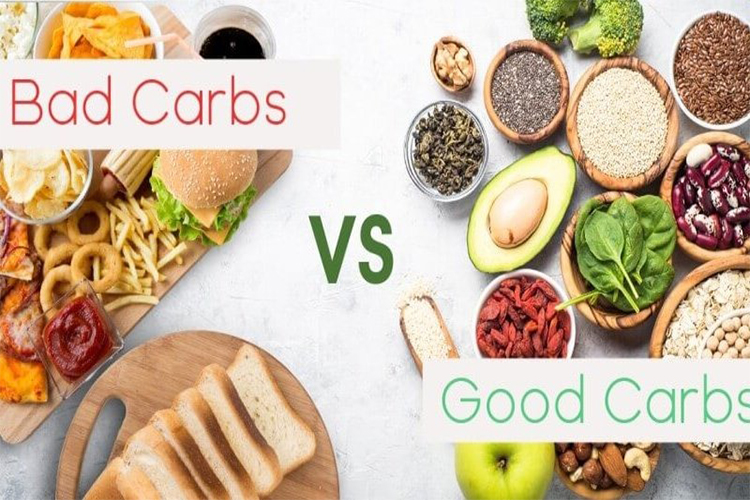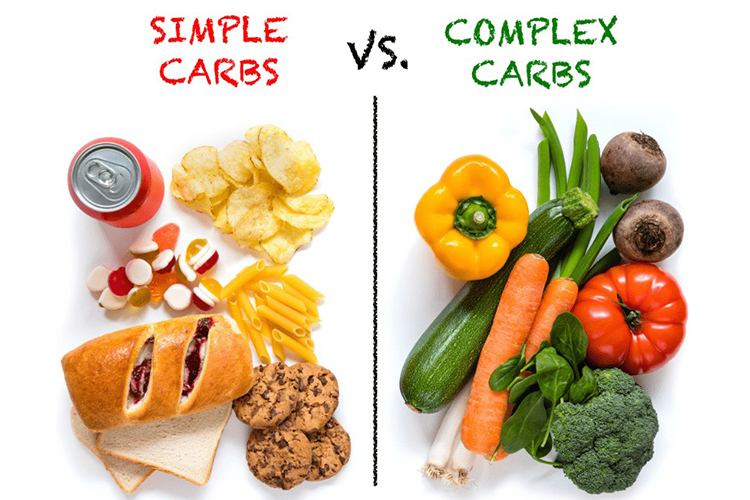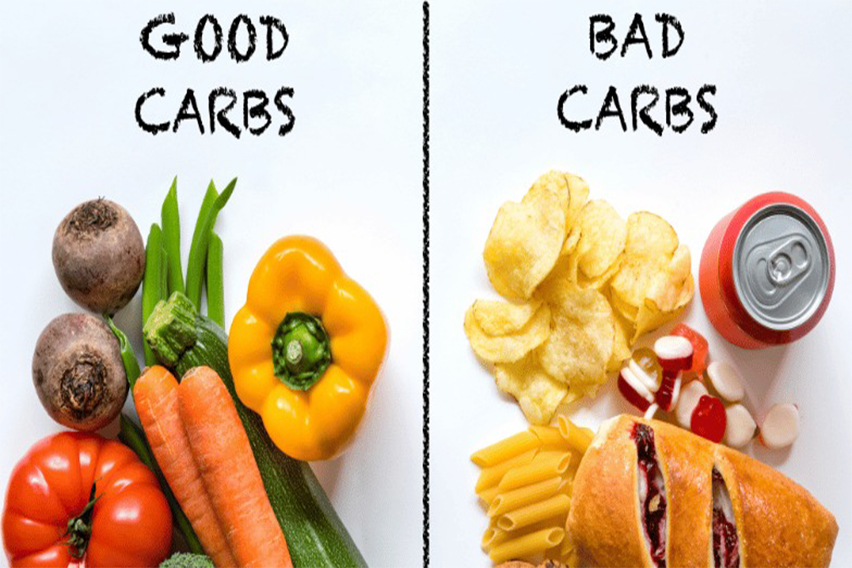When it comes to nutrition, carbohydrates are often a controversial topic. Some people believe that all carbs are bad and should be avoided, while others think that all carbs are good and should be consumed in abundance. The truth, however, lies somewhere in between. In this article, we will explore the difference between good carbs and bad carbs, and how they can impact your health.
Carbohydrates are one of the three macronutrients that our bodies need to function properly, alongside protein and fat. Carbs provide us with energy, and they can be found in a wide range of foods, including fruits, vegetables, grains, and dairy products. However, not all carbs are created equal. There are two main types of carbs: simple carbs and complex carbs.

Simple carbs, also known as simple sugars, are made up of one or two sugar molecules. These carbs are found in processed and refined foods such as candy, soda, and white bread. Simple carbs are quickly digested and absorbed by the body, causing a rapid increase in blood sugar levels. This sudden spike in blood sugar can lead to a burst of energy, followed by a crash. Over time, consuming too many simple carbs can increase the risk of obesity, type 2 diabetes, and other health problems.
On the other hand, complex carbs are made up of long chains of sugar molecules. These carbs are found in whole foods such as fruits, vegetables, and whole grains. Unlike simple carbs, complex carbs take longer to digest and are absorbed more slowly by the body, providing a steady source of energy over a longer period of time. Complex carbs also contain fiber, which can help regulate blood sugar levels, improve digestion, and reduce the risk of heart disease.
So, how can you tell the difference between good carbs and bad carbs? Here are some guidelines to follow:
Choose whole foods: Whole foods such as fruits, vegetables, whole grains, and legumes are generally good sources of complex carbs. They also contain a range of other nutrients, including vitamins, minerals, and fiber.
Limit processed and refined foods: Processed and refined foods such as candy, soda, and white bread are generally high in simple carbs and low in nutrients. They can also be high in added sugars, which can increase the risk of obesity, type 2 diabetes, and other health problems.
Look for high-fiber options: Fiber is an important nutrient that can help regulate blood sugar levels, improve digestion, and reduce the risk of heart disease. Look for high-fiber options such as whole grains, fruits, and vegetables.
Pay attention to portion sizes: Even healthy carbs can add up quickly if you eat too much of them. Pay attention to portion sizes and try to eat a balanced diet that includes a variety of different foods.
Good carbs:
Fruits (such as berries, apples, oranges, and bananas)
Vegetables (such as leafy greens, broccoli, carrots, and sweet potatoes)
Whole grains (such as brown rice, quinoa, oats, and whole wheat bread)
Legumes (such as lentils, chickpeas, and black beans)
Nuts and seeds (such as almonds, chia seeds, and flaxseeds)
Bad carbs:
Processed and refined foods (such as white bread, white pasta, and pastries)
Sugary drinks (such as soda, sports drinks, and fruit juice)
Candy and sweets (such as chocolate, candy bars, and gummy bears)
Sugary cereals and breakfast foods (such as sweetened cereal and instant oatmeal)
Fast food and fried foods (such as burgers, fries, and chicken nuggets)

In contrast, bad carbs, also known as simple carbohydrates, are typically found in processed and refined foods such as candy, soda, and white bread. These carbohydrates are made up of one or two sugar molecules, which are quickly absorbed by the body and cause a rapid increase in blood sugar levels. This can lead to a burst of energy followed by a crash, and over time, consuming too many bad carbs can increase the risk of obesity, type 2 diabetes, and other health problems.
The glycemic index (GI) is a measure of how quickly carbohydrates are digested and absorbed by the body and can be used as a guide to help distinguish between good carbs and bad carbs. Foods with a high GI, such as white bread and candy, cause a rapid increase in blood sugar levels and are typically considered bad carbs. In contrast, foods with a low GI, such as whole grains and vegetables, are digested more slowly, resulting in a steady release of energy and are typically considered good carbs.
It is also important to pay attention to the total carbohydrate content in foods, as even some whole foods can be high in carbohydrates. For example, fruits such as bananas and grapes are high in natural sugars and carbohydrates and should be consumed in moderation. However, these fruits are also rich in fiber and other nutrients, making them a healthier option than candy or other processed snacks.
When it comes to choosing good carbs over bad carbs, it is best to focus on whole foods that are naturally rich in complex carbohydrates, fiber, and other nutrients. This includes fruits, vegetables, whole grains, legumes, and nuts. These foods not only provide energy but also help to regulate blood sugar levels, improve digestion, and reduce the risk of chronic diseases.
On the other hand, processed and refined foods should be limited as they are typically high in bad carbs, added sugars, and unhealthy fats. These foods are often low in fiber and other nutrients and can contribute to weight gain, inflammation, and other health problems.
In conclusion, good carbs and bad carbs differ in their composition and impact on the body. Good carbs are found in whole foods and provide a steady source of energy, while bad carbs are found in processed and refined foods and can lead to a rapid increase in blood sugar levels. By focusing on whole foods that are naturally rich in complex carbohydrates, fiber, and other nutrients, individuals can make healthier dietary choices that support overall health and well being.

